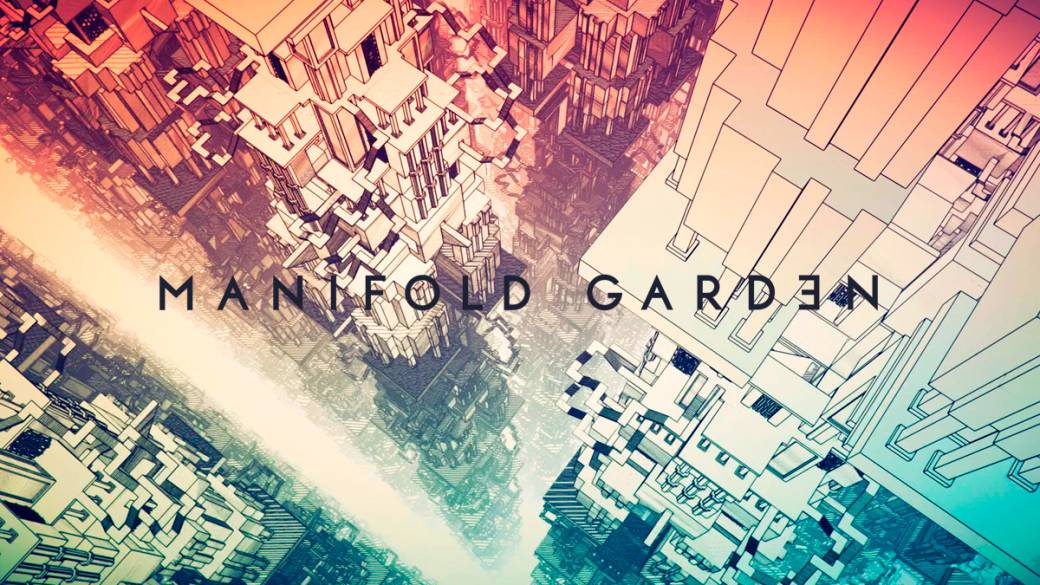
We know this unique first-person puzzle game spiced up by a precious artistic section that has surprised us. Well executed simplicity.
The puzzle genre never ceases to amaze us. Either way, the possibilities of ingenuity through electronic entertainment are indefinite and do not seem to have an expiration date; especially when we see that proposals such as Portal continue to be a reference and reference for productions both large and within the emerging independent scene. Manifold Garden is one of those ideas that comes almost without warning and that, at the same time, we love for its simplicity.
William Chyr is the creator of this work, which we can define as a giant —mayúsculo— puzzle game in the first person where everything is measured, paradoxically, in its proper measure. A Rubik’s cube made into a video game. And we say this because, despite the magnitude of the settings and the majesty of the set, it is sophisticated. Both at the design level and on the visual plane, which enters through the eyes on a large screen. After its passage through PC, consoles and mobile devices, we faced these scarce three hours of experience on Xbox Series S, whose SSD memory and Xbox Velocity Architecture have made loading times disappear. Needless to say, the game’s recommendation is guaranteed, but let us explain why.
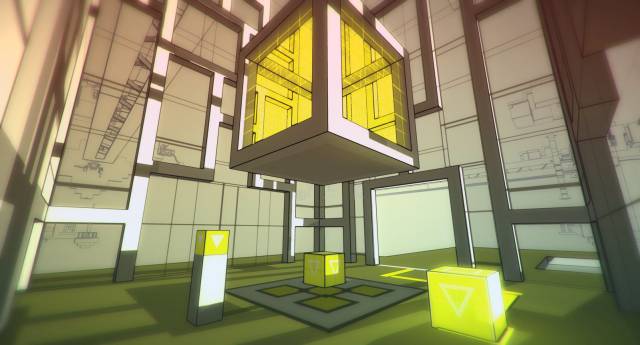
Sometimes the solution is simply to jump into the void: understanding Manifold Garden
Why do something artificially complex if through simplicity you can gain complexity? This is what Manifold Garden seems to want to tell us at the controls, that it does not explode in the individual design of its puzzles, but it does get it right when you add up all those little individual parts. The challenge is there; the considerably progressive difficulty curve is too. The use of three-dimensionality is total.
Manifold Garden proposes us to solve challenges through the use of gravity, colors and a cubic system that serves as the backbone of everything. There are no deaths here, no lives, no damage counters or time meters. We just have to take our time, think and… move on. Get. Where? That doesn’t matter, we just have to let ourselves go.
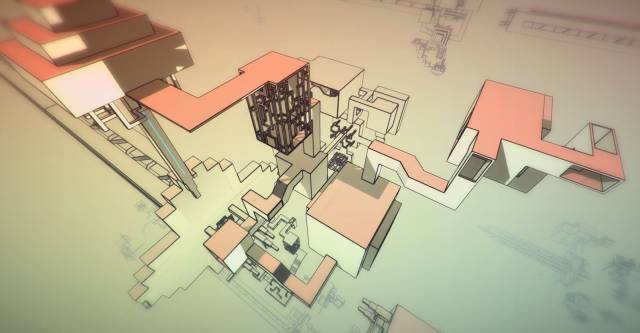
As soon as we start we will see each other inside a room, between four walls. We see everything in the first person; we can walk and touch the interactive elements of the environment, which are governed by a color scheme where only that of the same color responds to a stimulus. Meanwhile, gravity, which can be activated on any of the walls. Do you see that ceiling? It could be the ground if you first turn the stage ninety degrees and then turn the stage another ninety degrees. Wow. The first time is weird, but it’s also satisfying.
Next, you will see a huge blue hole and a box of that same color. What if we place it in that huge hole? Then a door opens … and you move forward. Steps, green boxes, yellow switches, and red intersections now appear. From wall to wall, from cube to cube, from stage to stage. It is like a Rubik’s cube, with color patterns that serve as a key to open doors. It’s simple, you don’t need dialogues and that’s why you don’t use them. Manifold Garden dispenses with everything you don’t need to be naturally minimalist. Essentially effective. Purely satisfying. It is almost mathematical, so it is a pity that there will not be any moment in the scarce three hours that it lasts, because it seems to want to explode and cannot. It stays in the remarkable when it could have been even more.
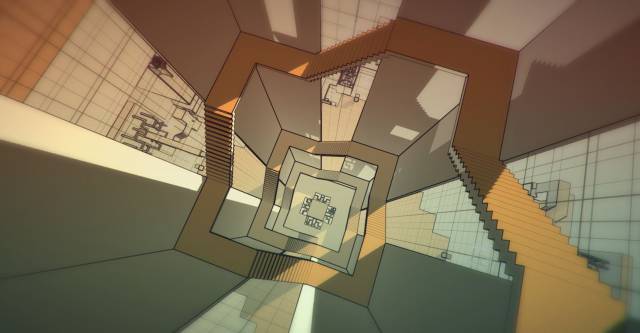
Playing with the concept of infinity, what is heaven, really?
There is a moment that we remember with a smile on our lips, and it is when you realize that the laws of Manifold Garden are deliberately violated, that the void is perhaps also the ceiling; that infinity is real and can be played with. It is at that moment, when you jump into the void between steps, skyscrapers and cubic shapes, that you understand that William Chyr had an extraordinary idea in mind because it cannot be understood or represented in another cultural medium or in another artistic manifestation. It is avant-garde pictorial art in movement, with depth, added to the addition of being sensitive.
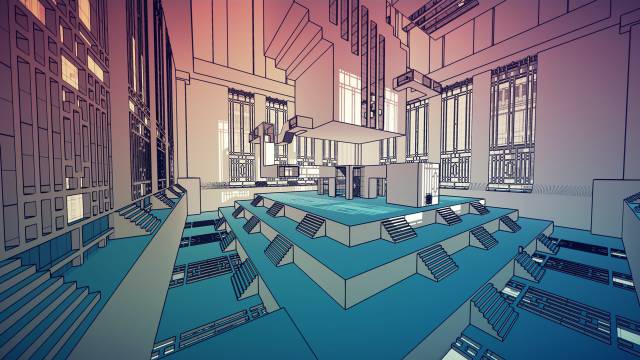
When you study the works of William Chyr, who acknowledges in an encounter with HyperHype that it took seven years to finish the title, you understand that his initial idea was to design a time travel MMO. In the end, the work feels like the video game heir to the optical effect of the infinite stairs in the Relativity painting by M. C. Escher. That inspiration is legitimate, as much as the one that embraces Portal, from Valve. The result is that everything works. Another name that we cannot forget in this Reviews is that of Martin Kvale, in charge of designing the game’s sound effects. They are few, very few, but they work wonderfully. We recommend playing with headphones because it is one of those titles that require concentration, that feel in the nuances, and playing in stereo will help us to place the sound in the exact place it comes from.
For the rest, this particular Rubik’s cube misses the opportunity to tell a story, which surely with a little effort would have turned out wonderfully. Luckily – and this speaks volumes for Chyr’s idea – he didn’t need a single line of dialogue to communicate with the player. And that, believe us, has a lot of merit, because we have completed the adventure almost at once, in a single afternoon, without thinking how much was missing or why we were walking on the wall (which was sometimes the ceiling and other times it was the floor). You just let yourself go. You jump. You fall. You place. You misplace. You walk. You advance. If it had lasted longer it would have ended up exhausting its own formula. Being dosed is also a virtue.
CONCLUSION
Manifold Garden is a pleasant surprise. A simple, straightforward, abstract, minimalist and complex video game through its simplicity. But above all, a video game. Inspired by the Rubik’s cube and based on the idea of the Relativity painting, this first-person puzzle title invites us to experiment by defying the laws of physics and gravity, an example that puzzles are there to impose their own rules , to skip them and turn them around so that the player sits inside. Sometimes fascinating, sometimes too limited, its three hours of duration leave a great taste in the mouth. Fully recommended.
THE BEST
- An amazing set design
- Artistically it is beautiful and simple; speaks to you through color
- His idea of the concept of infinity, very well executed
- Immediate loading times on Xbox Series X | S
WORST
- Does not stop exploding
- Your challenge falls short of what we would have liked
Good
It meets the expectations of what a good game is, has quality and does not present serious flaws, although it is missing elements that could have taken it to higher levels.
